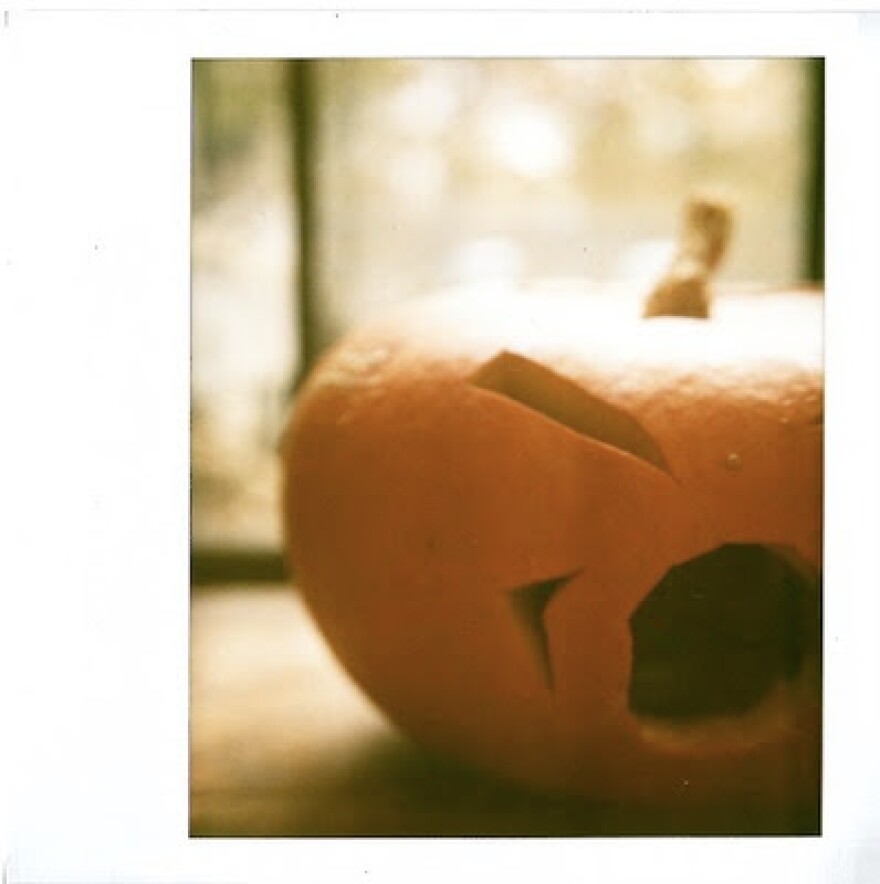Winter squash is everywhere these days. I find it in my soup and folded into pies, it’s hidden in the guise of muffins and sweetbreads. In the summer we get all kinds of vegetables, but this time of year we get all kinds of squash — long-keeping and thick-skinned enough see us through til spring.
This summer, I started a glossary by asking local farmers about what varieties they grow, and what they’re best for in the kitchen. Let’s start with the basics.
"This is your butternut and that peels up very nicely, it’s really orange," says Dorris Mills of Noquochoke Orchards in Westport.
Butternut is her top seller, she says, and probably the most popular squash locally amongst both farmers and cooks. It’s firm, sweet, and a good keeper, and versatile enough to work into almost any recipe. Next up, Tim Friary, of Cape Cod Organics Farm in Barnstable.
"Uh let’s see squash we got delicatas, uh acorn squash, and buttercup."
These are the other top three winter squash varieties. Delicatas are oblong, covered in a thin, pale yellow skin marked with dark green stripes. They’re mild, good baked with butter and maple syrup. Acorn squash looks like its namesake with a smooth, dark green skin, and has a flesh that’s sweet, almost peppery. Finally buttercups are a lot like acorns, except lumpier and incredibly dense.
David Light of the Kitchen Garden in Orleans, has our next entry. It’s a pumpkin, which is actually another category of winter squash.

"They’re sometimes called a Cinderella pumpkin, in French they’re called a Rouge Vif d-Etampes, meaning bright red. You can make a pie with them or do the usual pumpkin thing, if you’re willing to get about 25 pounds of pumpkin meat."
That’s from one pumpkin. In other words, bake one Cindarella pumpkin, scoop the meat out and put it in a blender, and you’ve got enough winter squash puree to fill the freezer and make soups and baked goods for an entire season.
Barbara Dean of Cape Cod Wildflowers Farm in Orleans also likes to grow big.
"This is a gardale squash it’s uh probably weighs about 35 pounds it’s kind of a pale grey blue color, um pumpkin like I guess in its shape but they’re tasty and uh, you know a good winter squash. I also have one of these guys."
Barbara added that it's an Italian variety that has ribs and a darker meat that is a light orange.
"This has a very, very dark center and likewise, tasty, hard as rock basically at the moment that would stay until Easter, I would suggest."
Barbara says she likes to eat both varieties baked and mashed, and served with a little bit of butter and honey.
Over the course of the season, other popular squash varieties I came across included Connecticut Field pumpkins and New England Pie pumpkins, both sweet and, not surprisingly, good for pies. There were also big, thick-skinned Blue and Red Hubbards good for soups, and Magdalenas, another good pie and sweetbread squash.
Finally at the end of the season, I met my favorite, a late variety back at Tim Friary’s stand.
"The knuckleheads have little marks on them, they’re kind of scarred up a little bit."
That’s right. There’s a winter squash, a pumpkin variety, called Knucklehead. It looks just like you’d imagine—round and rough and bright orange, covered in raised, bumpy warts. It makes a top-notch jack-o-lantern, but Tim says it’s also good peeled, baked, and eaten straight out of the oven, warm.
—
Here's a link to Elspeth's blog post with the squash glossary, links to photos and recipes:
http://www.diaryofalocavore.com/2011/01/local-food-report-squash-glossary.html








